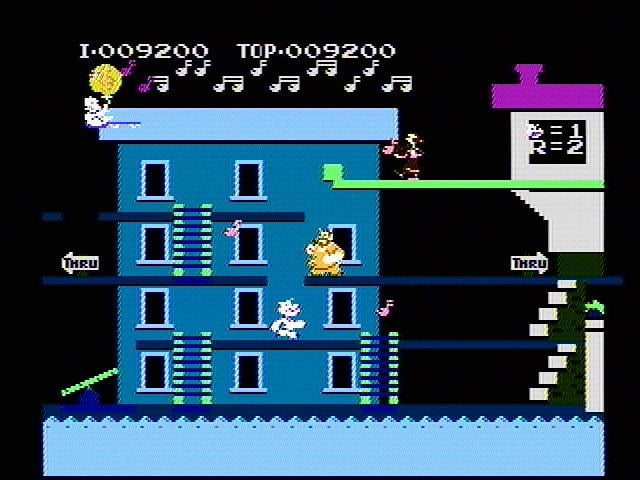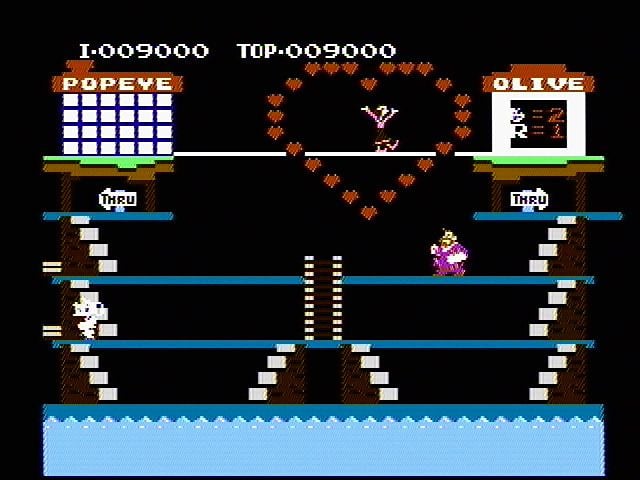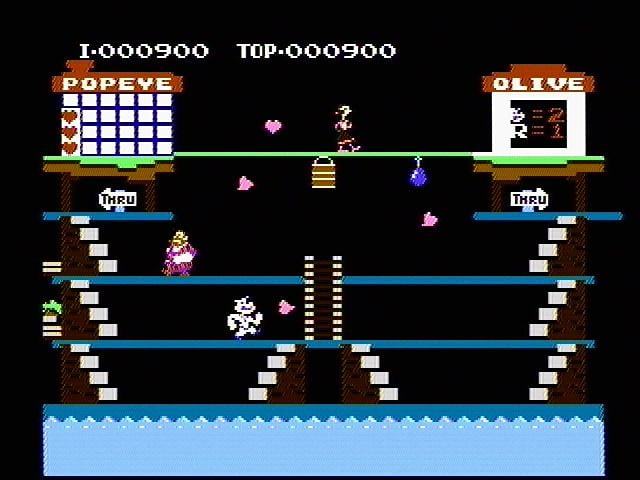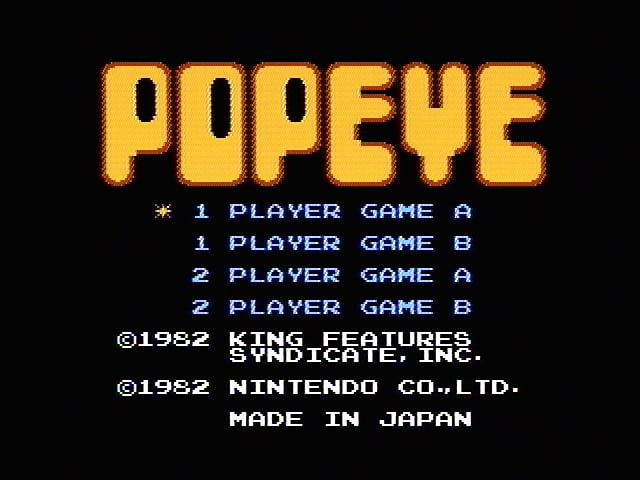
Popeye (1986-)
Developer: Nintendo
Publisher: Nintendo
Genre: Platform
Popeye for the NES was developed by Nintendo and released in 1986, with Nintendo also serving as the publisher. The game is a home console adaptation of the 1982 arcade title of the same name, bringing the popular cartoon character’s adventures to the NES audience. While it primarily remained an NES-exclusive experience, the game was part of a broader trend of early 1980s platformers based on licensed characters. There were no prequels for the NES, and the game functions as a standalone adaptation of the Popeye franchise, focusing on platforming and collection-based objectives.
In Popeye, players control the titular sailor as he navigates multiple levels to collect items while avoiding enemies. The game’s inspiration comes from the classic comic strip and animated cartoons, emphasizing Popeye’s struggle against Bluto to rescue Olive Oyl. Levels are themed around locations from the cartoons, including docks, construction sites, and ship decks, with each stage presenting increasingly complex enemy patterns and obstacles. The narrative is simple, but it effectively captures the charm and conflict of the original series.
Gameplay involves moving Popeye across platforms, climbing ladders, and jumping between areas to collect hearts, musical notes, or other themed items. Players must avoid or neutralize enemies such as Bluto, the Sea Hag, and various other hazards while racing against the clock. The game rewards precision, timing, and pattern recognition, with points awarded for collected items and defeated foes. Each level culminates in a challenge that tests the player’s ability to navigate hazards and complete collection objectives efficiently.
The soundtrack features upbeat and playful music that complements the cartoonish aesthetic, while sound effects highlight jumps, item collection, and enemy interactions. Popeye did not receive a direct NES sequel, though the character appeared in various other video game adaptations across platforms in subsequent years. Promotion relied on the popularity of the Popeye franchise, emphasizing the recognizable characters and the challenge of the platforming gameplay. Reception was generally positive, with critics praising its faithful representation of the source material and engaging level design, though some noted the game’s difficulty and repetitive mechanics could challenge casual players.
Images from MobyGames
Buy Popeye
Click one of the Ebay or Amazon buttons below to check the latest prices and purchase Popeye for the Nintendo Entertainment System.

Related Searches
Popeye NES Download
Popeye is available to purchase and download from a range of vendors. Always shop around...
Popeye NES Manual
Various repositories around the internet have scanned and archived a range of retro manuals. Search now to.....
Popeye NES Rom
We don't host or link to rom sites for this game. However, there are many sites out there that may be...
Popeye NES Walkthrough
Many sites - particularly YouTube - host a range of walkthrough videos to guide you in your quest to get...
Popeye NES Cheats
There are various sites out there that can offer cheat codes for games. Search now to find all available...
Popeye NES Controls
This information can often be obtained through the user manual. Alternatively there are many sites out there...
Popeye NES Release Date
The initial release date for Popeye is stated as June 1986. Other ports of the game may..
Popeye NES Review
There are many sites out there that have collated and documented historic reviews of this game. Search now...
Popeye Famicom
As a Nintendo Entertainment System release, this game was also likely also available on the Famicom. This....
Popeye NES Speedrun
There is now a community of competitive speedrunners who will try and gain the fastest possible time on their....








